The Napoleon III style (1852-1870)
07.07.22
A period of decadence, the Second Empire (1852-1870) sought to impose prestige through pomp, festivities and luxury, in contrast to the bourgeois reign of the discreet Louis-Philippe. The Napoleon III style style is the last to bear the name of a sovereign, that of Louis Napoleon Bonapartefirst elected president by universal male suffrage, then prince-president before being crowned emperor in December 1852.
Considered eclectic, this style is based on a revival of earlier styles. Everything about it is borrowed from the styles that preceded it. Instead of drawing their inspiration from a single era, Second Empire cabinetmakers and decorators drew indiscriminately, with joyful exuberance, from all sources.
This blend of styles is evident in the decorative arts, not successively but simultaneously. The result is a richness, an abundance, an eclecticism that is sometimes excessive, but which gives an impression of research and fertility.
PASTICHES AND NOSTALGIA
Pair of ewer in the Renaissance style
This taste forhistoricism recaptures the forms of all periods. From Louis XIII, ornamentalists took up the turned legs in chapelets, from Louis XIV, Boulle furniture with its brass and tortoiseshell marquetry, sometimes replaced by stained leather or dark wood, from Louis XV, rococo curves, and from Louis XVI, fluted legs finer than the originals. Viollet le Duc's work also brought the Middle Ages back into fashion. References to earlier styles became the rule.
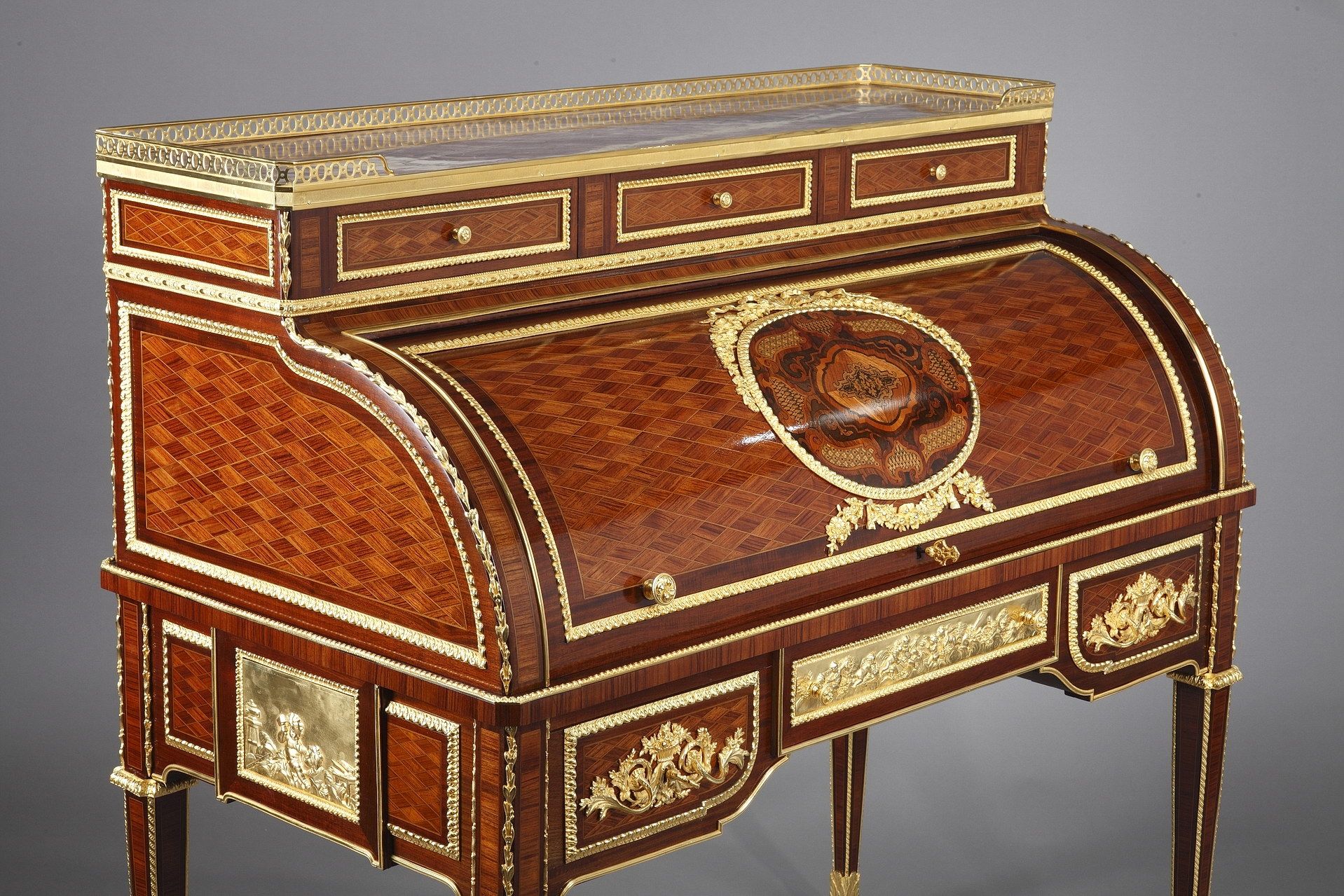 Cylinder desk after Riesener attributed to Beurdeley
Cylinder desk after Riesener attributed to Beurdeley
These numerous copies or adaptations of 18th-century furniture were part of a drive to refurbish the national palaces: the Tuileries, Saint-Cloud, Compiègne and so on. The Garde-Meuble impérial bought back antique furniture, which was then sold to refurnish the royal houses.
Empress Eugénie played a major role in this historicist craze. Her admiration for Marie-Antoinette made her particularly fond of Louis XVI styles. The crown commissioned Jean-Henri Riesener (1734-1806) to make meticulous copies of antique furniture, including the Louis XV secrétaire à cylindre in the Château de Versailles. On the other hand, the Grohé brothers produced a set to furnish the Galerie François Ier, and Jeanselme, who had taken over the Jacob firm, made eighteenth-century armchairs for the Château de Saint-Cloud. There is even talk of a "Louis XVI - Empress" style. The great pastiche specialists were Louis-Auguste-Alfred Beurdeley (1808-1882), Alexandre-Georges Fourdinois (1799-1871) and Henri Dasson (1825-1896).
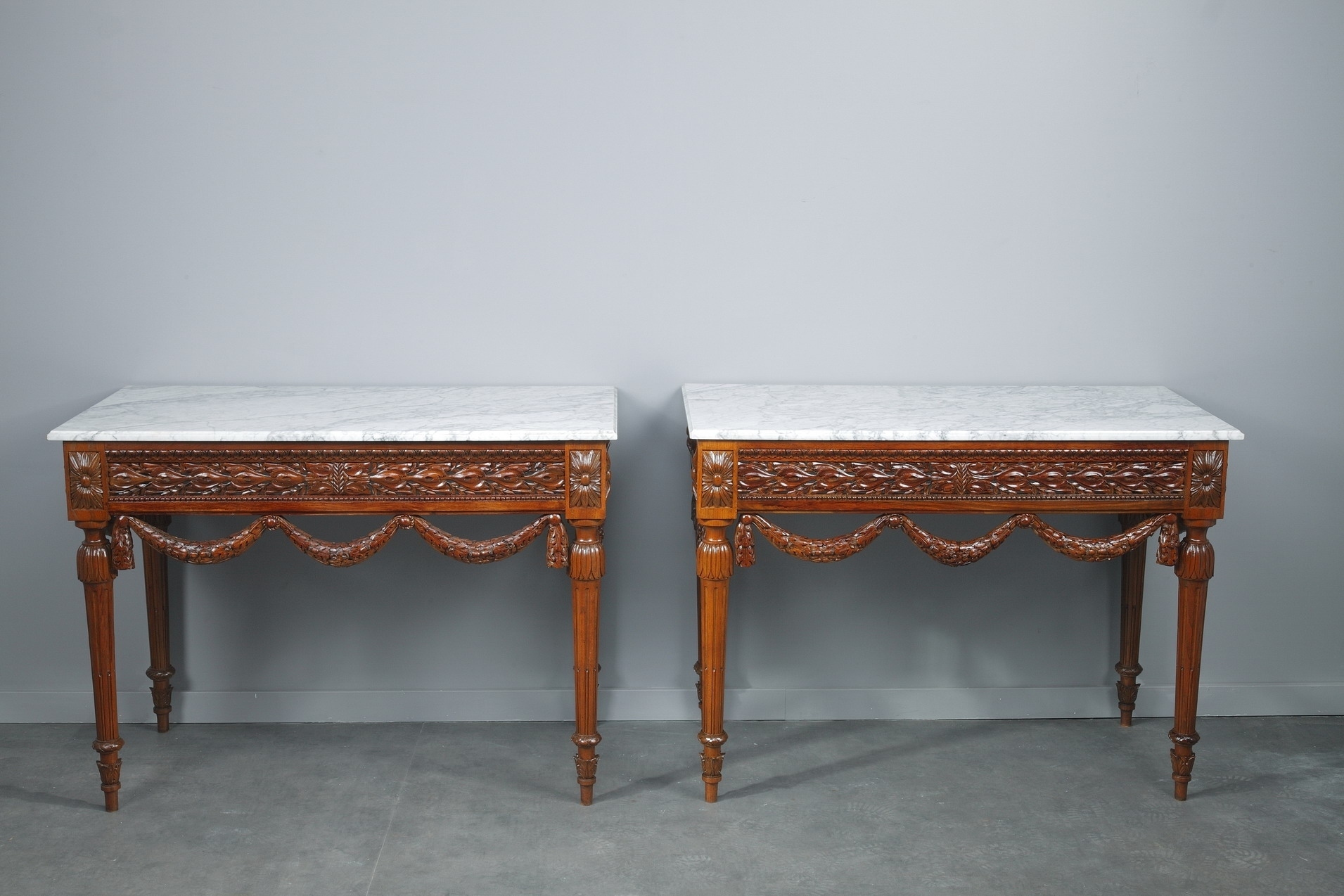
Pair of Louis XVI style consoles in walnut and marble
But this return to style had a political purpose. By returning to the forms of the Ancien Régime, the Second Empire identified itself with the court and established royalty, giving it a certain legitimacy. By reorganizing French industries, Napoleon III breathed new life into the decorative arts, transforming production.
FURNITURE, A REFLECTION OF A CHANGING SOCIETY
At the same time, the bourgeoisie, the dominant class of the mid-19th century, was looking for a certain level of comfort, with a multiplicity of small pieces of furniture within easy reach. There was a desire for an intimate, welcoming decor with functional features: chiffonniers, secretaries, games tables, pedestal tables. New categories of lightweight, easy-to-move furniture were created: nesting tables, tilting pedestal tables, the charivari chair and a multitude of armchairs upholstered in velvet or brocade, usually red, with braided bangs to hide the wood (confident, boudeuses, bornes, poufs...).
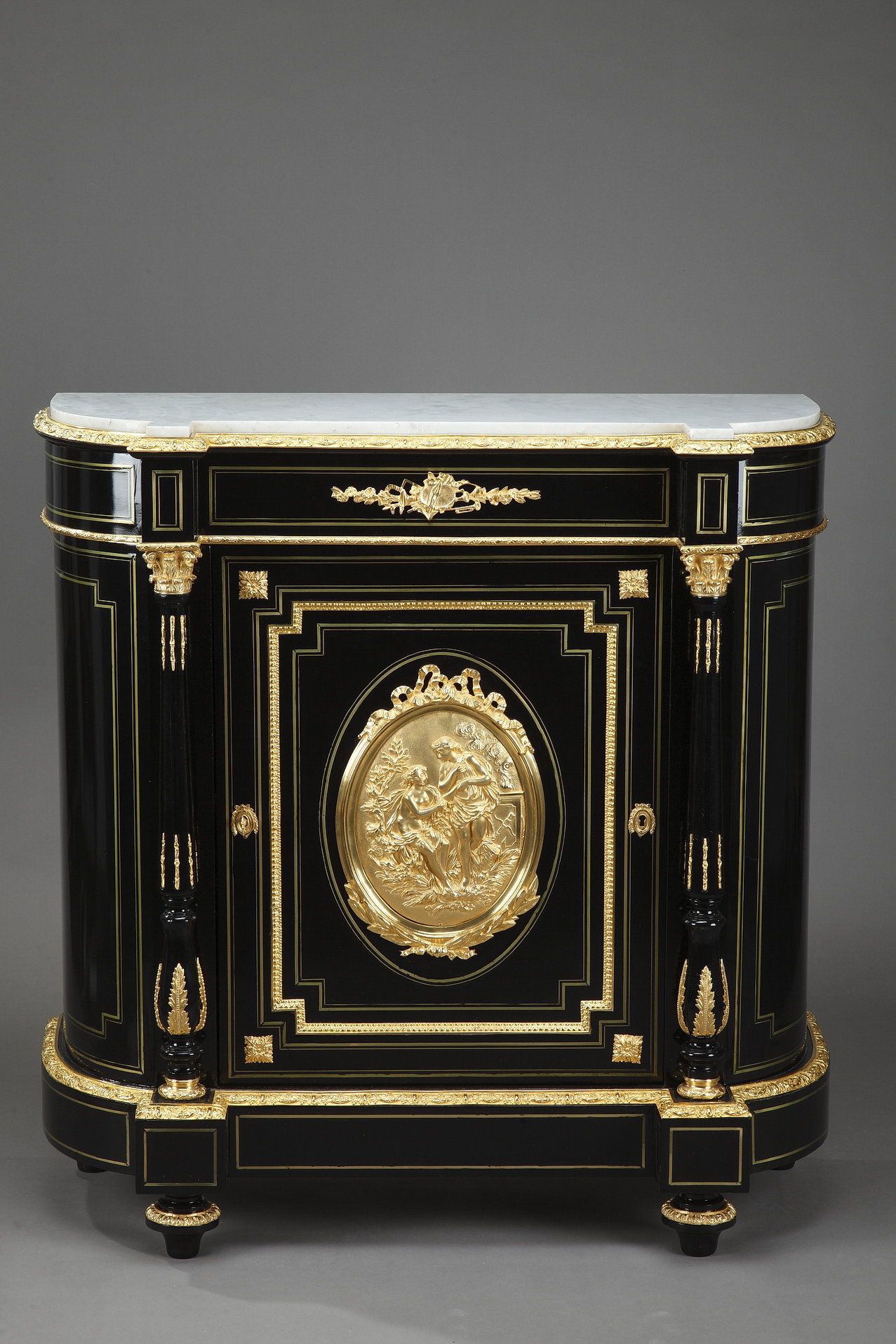 Napoleon III period sideboard in blackened wood and gilt bronze
Napoleon III period sideboard in blackened wood and gilt bronze
There's an affection for pomp and wealth, with a taste for contrasts that give an appearance of luxury. Furniture in ebony or blackened pearwood is adorned with gilded bronzes, colored marbles and Boulle-type marquetry with red scales. Theinlaying of precious woods, mother-of-pearl, ivory and brass flourished thanks to the band saw, which enabled them to be cut with extreme finesse. The result was furniture with highly precise decorations and a perfect appearance, unlike 18th-century furniture which showed signs of tools. Rivart, for example, developed an incredible porcelain marquetry inlaid into the furniture veneer.
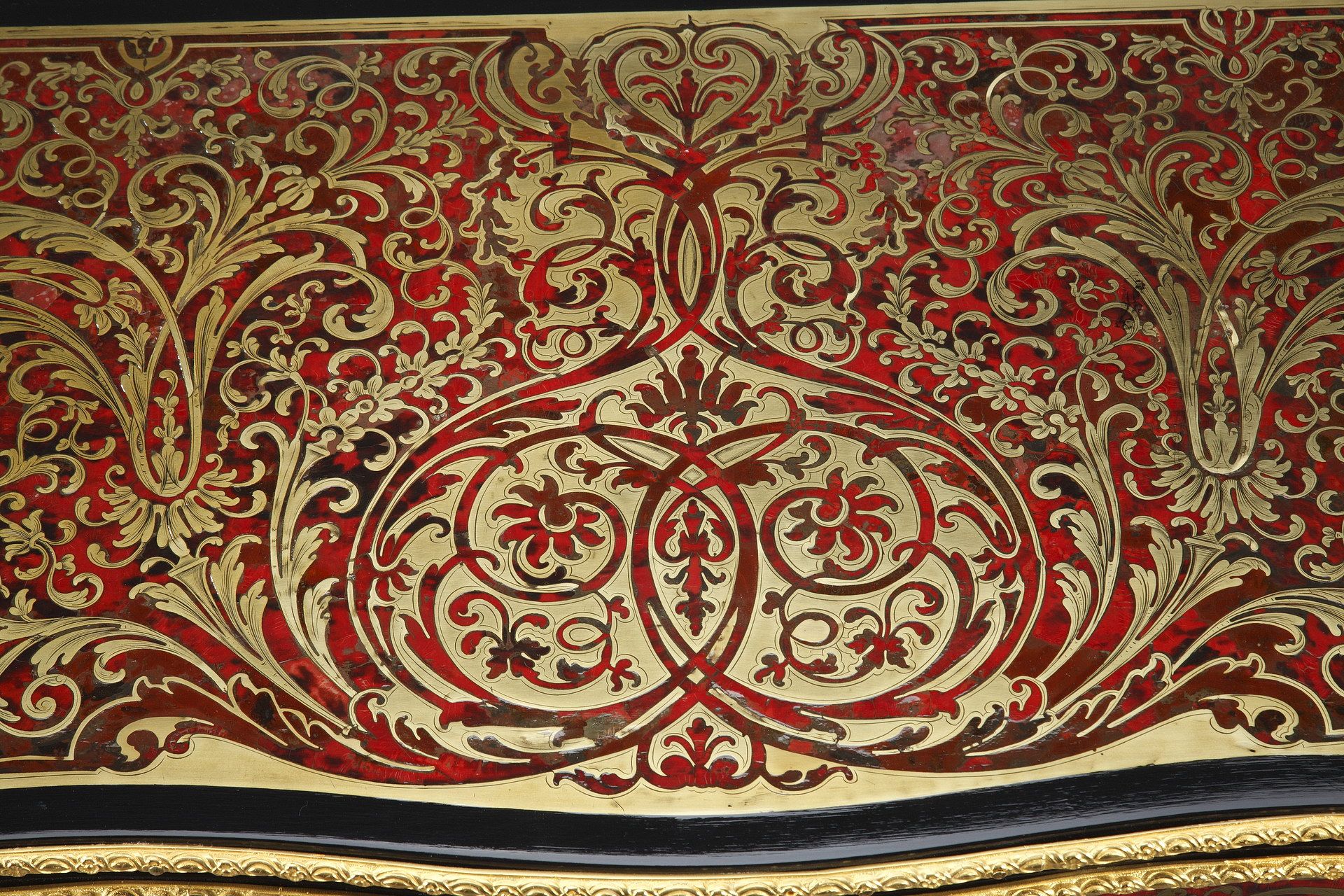 Detail of a Boulle marquetry game table, Napoleon III period
Detail of a Boulle marquetry game table, Napoleon III period
Increasingly mass production was aided by the mechanization of artisan workshops. There was a desire to reduce costs, to make fashion more accessible to the bourgeoisie, who were fond of multi-inspired decors. This division of labor may explain the lack of innovation in design.
However, the Exposition Universelle in Paris from 1855 onwards led to a new reflection on the status of the decorative arts. Manufacturers wanted to elevate them to the status of a major art form, designing furniture as works of art. This led to the increasingly frequent appearance of stamp signatures on the invisible sides of furniture. This is the case with our Louis XVI-style chests of drawers stamped GROHE under the marble top.
 Stamped by Grohé under the marble of a Louis XVI-style chest of drawers.
Stamped by Grohé under the marble of a Louis XVI-style chest of drawers.
NEW TECHNIQUES
One of the distinctive features of the Napoleon III period is the use of black-backed papier-mâché . Originating in England, this technique is based on an amalgam of paper, glue and plaster, which is heat-solidified and molded. This material, then as hard as wood, is then varnished, lacquered and decorated. This process, often inlaid with mother-of-pearl, was adopted by French furniture makers and became widespread from 1860 onwards.
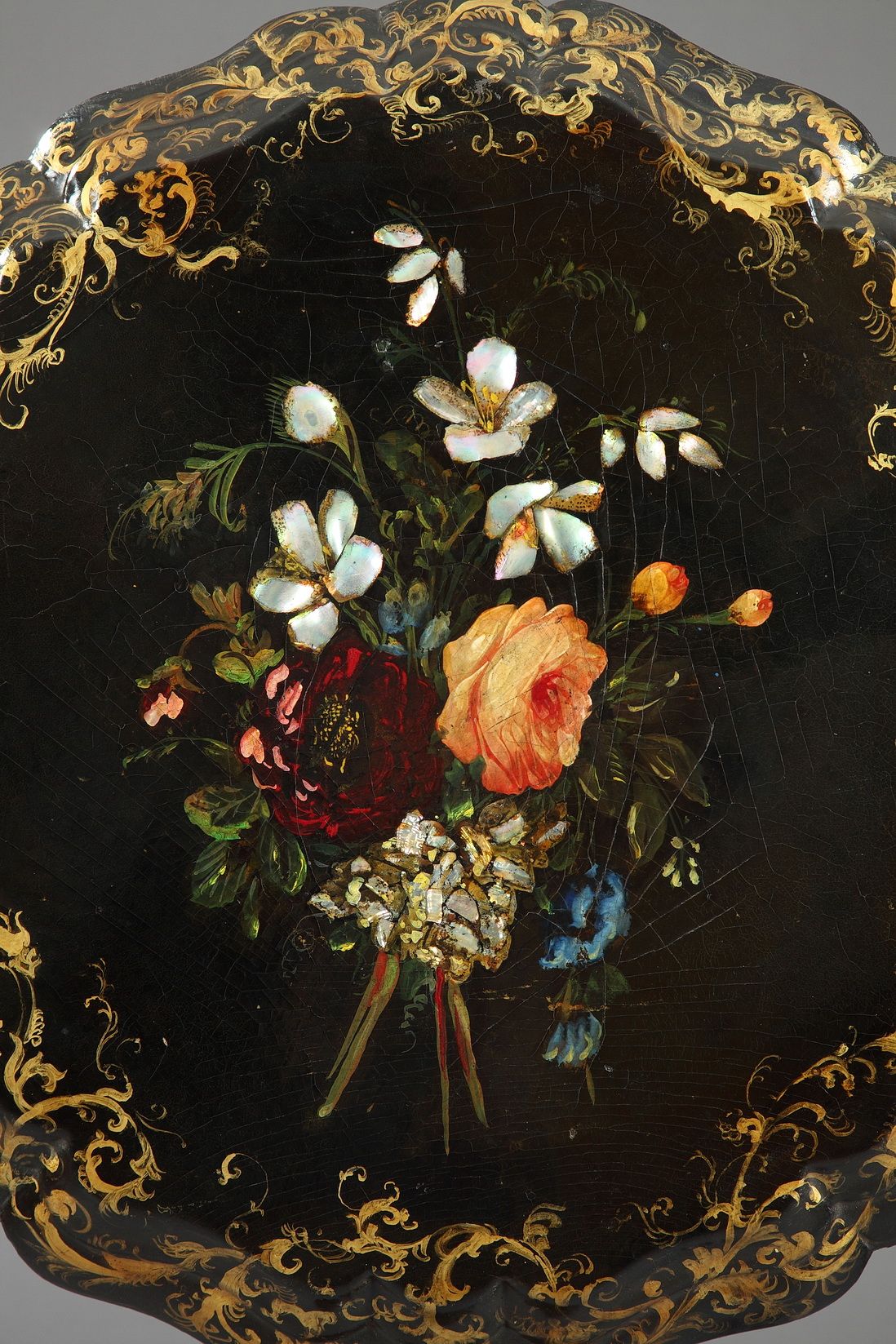 Detail of "burgauté" marquetry on a tilting pedestal table in wood and lacquered cardboard
Detail of "burgauté" marquetry on a tilting pedestal table in wood and lacquered cardboard
It was at this time that the fashion for " burgauté " furniture began to spread, with its pearly ornamentation derived from a shell called a burgau, the inside of which is lined with pearlescent surfaces, iridescent with blue, green and purple reflections. This technique, already used for the King of Rome's FREE cradle by the City of Paris in 1811, now in the Kunsthistorisches Museum in Vienna, was completely rethought to suit new tastes. Burgundian furniture and seating is one of the most typical features of the Napoleon III style.
CONCLUSION
When Charles Garnier presented the Opéra Garnier project to Louis Napoléon Bonaparte, the emperor reportedly said, "It's not Gothic, it's not Renaissance, it's not classical, but what style is it?" To which the architect is said to have replied "Napoleon III". Perhaps he was right in asserting that this style actually had its own identity, perfectly recognizable despite its many quotations.
Bibliography
- French furniture, Napoleon III 1880s, Odile Nouvel Kammerer, 1996
- Recognizing stylish furniture, Pierre Faveton, 2014
- Le guide des styles, Musée des arts décoratifs, Jean-Pierre Constant, Marco Mencacci, 2018


